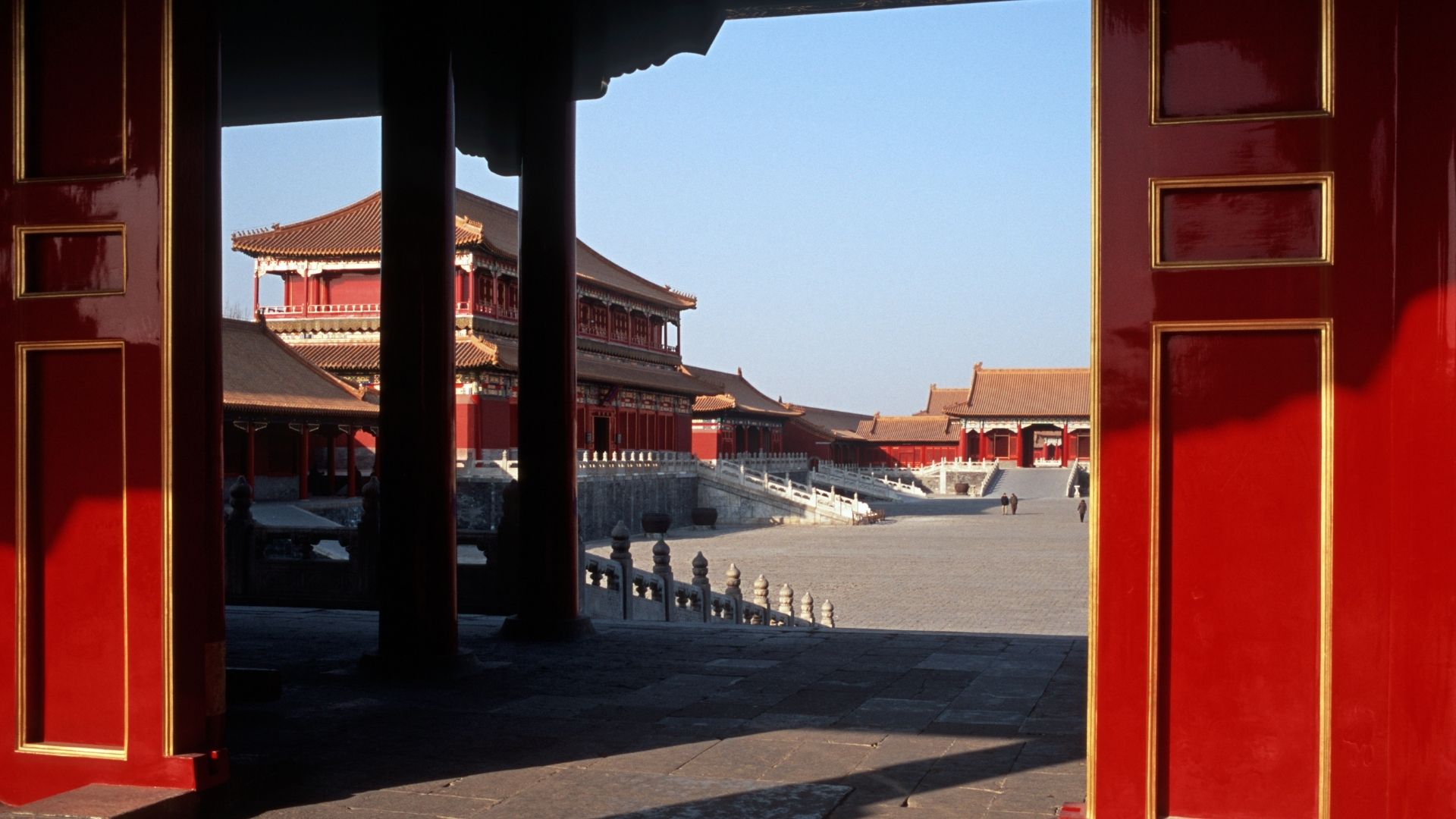China – Interpretation Of The Anti-Monopoly Guidelines For Pharmaceutical Sector: Key Risk Considerations.
On January 23, 2025, the Anti-Monopoly and Anti-Unfair Competition Commission under China’s State Council officially released the PRC Anti-Monopoly Guidelines for the Pharmaceutical Sector (“the Pharmaceutical Guidelines”). From release of the draft for public comments on August 9, 2024, to its formal issuance on January 23, 2025, it took only around six months. The Pharmaceutical Guidelines is composed of 7 chapters including 55 articles, fully encompassing traditional Chinese medicine, chemical drugs, and biological products, and addressing various parts of the value chain such as manufacturing and commercial practices.
This article interprets key provisions of the Pharmaceutical Guidelines and analyzes frequent anti-monopoly risks in China for pharmaceutical companies, with the view to share some insights based on the real-life enforcement and judicial cases.
- More Tolerant Approach to Joint R&D Agreements Does Not Mean Absence of Risks
Compared to the draft, the final version of the Pharmaceutical Guidelines adopts a more permissive stance toward reasonable restrictions in joint R&D agreements. Article 11 of the Pharmaceutical Guidelines deletes the third and fourth sub-paragraphs in the draft, which stated “restricting R&D activities in fields unrelated to the joint R&D agreement” and “restricting R&D activities in fields related to the joint R&D agreement after its completion”. These changes exclude such conducts from per se illegal horizontal monopoly agreements, signaling enforcement authorities’ tolerant stance to some extent. Additionally, Article 18 clarifies that joint R&D activities suspected of constituting monopoly agreements may seek exemption under Article 20 (1) of the Anti-Monopoly Law (“AML”), e.g., technical improvement and new product development.
These amendments indicate that joint R&D agreements are not automatically exempt from anti-monopoly regulation. However, anti-monopoly enforcement authorities tend to conduct a case-by-case analysis when scrutinizing such agreements. If an agreement embodies restrictions on members’ R&D activities beyond its scope, the authorities may examine whether such restrictions are necessary to achieve efficiency or other legitimate objectives, whether the duration and scope of the restrictions are reasonable, and whether less restrictive alternatives exist that would have a lesser impact on competition, in order to determine whether the agreement constitutes a monopolistic agreement.
That said, we recommend pharmaceutical companies to proceed with caution when entering into joint R&D agreements. When drafting agreements that include R&D restrictions, it is crucial to carefully assess whether such restrictions are indispensable for the joint R&D, whether their duration and conditions exceed reasonable limits, and to rigorously evaluate their actual impact on market competition in the specific context.
- Special Provisions and Considerations for Pay-for-delay
In the Saxagliptin Tablets case, the Supreme People’s Court (“SPC”) ruled on the application for withdrawal of appeal and made the first preliminary anti-monopoly review of reverse payment agreements for pharmaceutical patents. The SPC affirmed that courts have the authority to assess whether agreements resembling reverse payment agreements violate the AML and clarified the scope and methodology for such reviews.
The Pharmaceutical Guidelines explicitly states in Article 13 that reverse payment agreements may constitute horizontal monopoly agreements. First, Article 13 establishes that there is an actual or potential competitive relationship between the originator drug patent holder and the generic drug applicant. It defines a reverse payment agreement as an arrangement in which “the originator drug patent holder, without justifiable reasons, provides or promises to provide direct or indirect financial compensation to the generic drug applicant, who in turn makes non-competitive commitments, such as refraining from challenging the validity of the originator drug’s patent rights, delaying entry into the relevant market, or refraining from selling generic drugs in specific regions”. Furthermore, Article 13(2) of the Pharmaceutical Guidelines outlines the factors to be considered when determining whether a reverse payment agreement constitutes a monopoly agreement, including: (1) whether the financial compensation provided or promised by the originator drug patent holder to the generic drug applicant is significantly higher than the costs associated with resolving the originator drug patent disputes and lacks a reasonable justification; (2)whether the agreement effectively extends the market exclusivity period of the originator drug patent holder or hinders or impedes or delays the entry of generic drugs into the relevant market; (3) other factors that exclude or restrict competition in the relevant market. Compared with the draft, the final version of the Pharmaceutical Guidelines removes the consideration of “the likelihood of the originator drug patent being declared invalid if the generic drug applicant files a patent invalidation request”.
Regarding reverse payment agreements, Article 20 of the Explanations of the Supreme People’s Court on Several Issues Concerning the Application of Law in the Trial of Civil Disputes Involving Monopolies (“the Anti-Monopoly Law Judicial Interpretation”) clarifies that an agreement between a generic drug applicant and an originator drug patent holder constitutes a horizontal monopoly agreement if it meets the following conditions: (1) the originator drug patent holder provides or promises to provide unjustifiable financial or other forms of compensation to the generic drug applicant; and (2) the generic drug applicant commits to refraining from challenging the validity of the originator drug patent or delaying entry into the relevant market. Compared with the Anti-Monopoly Law Judicial Interpretation, the Pharmaceutical Guidelines further refines the criteria for determining whether the compensation is “unjustifiable”, specifically, “whether it is significantly higher than the costs reasonably associated with resolving the originator drug patent disputes and lacks a reasonable justification”. Meanwhile, the Pharmaceutical Guidelines adopts a more general description of the effects of reverse payment agreements, rather than specifying specific behavioral manifestations such as “committing not to challenge” as listed in the Anti-Monopoly Law Judicial Interpretation. These distinctions indicate that the Pharmaceutical Guidelines places greater emphasis on the substance and competitive effects of reverse payment agreements.
In light of this, we recommend pharmaceutical companies to proceed with caution when entering into settlement agreements between originator drug companies and generic drug companies in the context of patent infringement disputes. Particular attention should be given to assessing the likelihood of the originator drug patent being declared invalid, the presence of financial compensation, the existence of justifiable reasons, whether the compensation is significantly higher than dispute resolution costs, whether the generic drug applicant is required to refrain from challenging the patent, and whether the agreement effectively extends the market exclusivity period of the originator drug company or impedes market entry.
- Risks of Price Maintenance in the Pharmaceutical Distribution Sector
The pharmaceutical distribution sector has consistently been a focal point for anti-monopoly enforcement and judicial scrutiny in China. Typical cases, such as the Yangtze River Pharmaceutical Case, Zizhu Pharmaceutical Case, and Hainan Yishun Case, all involve such practices.
The Pharmaceutical Guidelines specifically stipulates fixed resale prices and minimum resale price restrictions (Resale Price Maintenance) in Articles 14 and 15, clarifying the risks of “unfair price manipulation” that may arise in pharmaceutical distribution practices. First, Article 14(1) stipulates the general circumstances under which a vertical price monopoly agreement is established, including: (1) Fixing price levels, price fluctuation ranges, or setting a minimum resale price for drugs through written agreements, oral agreements, price adjustment letters, price maintenance notices, or other means; (2)Indirectly fixing resale prices or establishing minimum resale prices by fixing or limiting profit margins or other transaction-related fees such as discounts, rebates, or handling fees.
Second, Article 14(2) clarifies the specific ways in which price-fixing agreements are implemented, including:
- Punitive measures, such as reducing rebates or discounts, imposing penalties or requiring deposits for breach of contract, refusing to supply goods, or terminating agreements;
- Incentive measures, such as providing rebates or discounts, prioritizing supply, or offering additional support;
- Monitoring and supervision, such as examining the sales records and invoices of transaction counterparts, engaging third-party monitors, or utilizing data analytics and algorithms.
Third, Article 14(3) establishes the presumption rule for determining whether a pharmaceutical company and its transaction counterpart have reached an RPM arrangement. The anti-monopoly enforcement authorities presume that such agreements exclude or restrict competition and thus constitute a monopoly agreement, unless the pharmaceutical companies can present evidence demonstrating that the agreement does not have such effects. The Pharmaceutical Guidelines also provides guidance on the types of evidence pharmaceutical companies may collect, including:
- The agreement does not restrict intra-brand competition or create cumulative adverse competitive effects;
- The agreement does not restrict inter-brand competition or create cumulative adverse competitive effects;
- The agreement does not lead to higher drug prices, reduced drug supply, or increased market entry barriers.
These provisions align with Article 22 of the Anti-Monopoly Law Judicial Interpretation, which outlines the SPC’s approach in assessing whether RPM arrangements exclude or restrict competition. Specifically, the following factors are considered:
- The market power of the defendant in the relevant market and the cumulative adverse competitive effects of the agreement;
- Whether the agreement increases market entry barriers, hinders more efficient business models, or restricts intra-brand or inter-brand competition;
- Whether the agreement has pro-competitive effects, such as preventing free-riding, promoting inter-brand competition, maintaining brand image, improving pre-sales or after-sales services, or fostering innovation, and whether these effects are necessary to achieve.
Based on the above provisions, Article 22 of the Anti-Monopoly Law Judicial Interpretation takes pro-competitive effects into account when evaluating RPM arrangements. Combined with the Pharmaceutical Guidelines, this framework provides pharmaceutical companies with clearer direction in collecting both defensive and countervailing evidence.
Finally, Article 15 of the Pharmaceutical Guidelines further clarifies circumstances that do not constitute vertical price monopoly agreements, including: (1) where a pharmaceutical company entrusts an agent to sell drugs and determines the sales price or other transaction conditions related to the agency business; (2) where a pharmaceutical company bids or negotiates prices under centralized drug procurement rules, and its transaction counterpart sells drugs to terminal medical institutions at the agreed-upon price within the procurement framework; (3) where a pharmaceutical company retains control over the sales and promotion of drugs and sets the sales price, while its transaction counterpart provides only auxiliary services such as importation, delivery, invoicing, and technical support.
With regard to the risks of RPM in the pharmaceutical distribution sector, we believe that the risk is relatively low in cases involving agency relationships, centralized procurement, and intermediary services. However, RPM is kindly of presumed illegal in practice, whether implemented directly or indirectly, and thus carries significant legal risks.
Given the relatively strict standard of burden of proof required for pharmaceutical companies to demonstrate that an agreement does not exclude or restrict competition, we recommend that companies continuously collect and retain favorable evidence in their daily operations in accordance with the Pharmaceutical Guidelines and the Anti-Monopoly Law Judicial Interpretation.
- “Organization” and “Substantial Assistance” in Monopoly Behaviors in the Pharmaceutical Sector
Based on the new provisions regarding the illegality and legal liability of “organization” and “provision of substantial assistance” in monopoly agreements, introduced in the 2022 revision of the AML, the Pharmaceutical Guidelines delineates and refines provisions addressing behaviors that may constitute “organization” and “substantial assistance” in the pharmaceutical sector.
- Online trading platforms or third-party operators that exercise decisive control over the scope, primary content, or implementation conditions of monopoly agreements formed or executed by pharmaceutical entities;
- Organizing, coordinating, or facilitating the acquisition or exchange of competitively sensitive information among competing pharmaceutical companies, thereby enabling the conclusion or execution of Monopoly Agreements;
- Providing material support, establishing critical facilitative mechanisms, or delivering other substantive assistance for the conclusion or execution of monopoly agreements via price-monitoring services or the strategic use of platform rules, data analytics, and algorithmic tools.
In light of these provisions, we strongly advise operators of online pharmaceutical trading platforms and price-monitoring service providers to exercise heightened caution regarding the sharing of competitively sensitive information with other market participants.
- Determination of Excessive pricing in the Pharmaceutical Sector
Unfairly high pricing (excessive pricing) is the most-frequent-fined abusive behavior in the pharmaceutical sector. Among the 15 cases of abuse of market dominance in the pharmaceutical sector from 2015 to date, 9 cases involve excessive pricing.
| No. | Case Name | Relevant Market | Parties Involved | Type of Behavior | Penalty |
|---|---|---|---|---|---|
| 1 | Abuse of market dominance by Jiangxi Xiangyu Pharmaceutical Co., Ltd. (2024) | China-wide Iodized Oil Active Pharmaceutical Ingredient (API) Market | Distributor | Unfairly High Price | Fines: 4% of 2019 sales of the party involved |
| 2 | Abuse of market dominance by Shanghai No.1 Biochemical & Pharmaceutical and Others (2023) | China-wide Injectable Polymyxin B Sulphat Market | Wuhan Huihai, Wuhan Kede and Minkang: API distributorsShanghai B&P: Formulation Manufacturer | Unfairly High Price | Confiscation of illegal gains;Fines: 8% of 2022 sales of Wuhan Huihai and Wuhan Kede; 3% of 2022 sales of Minkang Pharmaceutical and Shanghai B&P |
| 3 | Abuse of market dominance by Tianjin Jinyao Pharmaceuticals Co., Ltd. (2023) | China-wide Carmustine Injection Market | Manufacturer | Unfairly High Price | Confiscation of illegal gains;Fines: 2% of 2019 sales |
| 4 | Abuse of market dominance by Northeast Pharmaceutical Group Co., Ltd. (2023) | China-wide Levocarnitine API Market | Manufacturer | Unfairly High Price | Fines: 2% of 2018 sales |
| 5 | Abuse of market dominance by Nanjing Ningwei Pharmaceutical Co., Ltd. (2021) | China-wide Chlorpyrifos API Market | Distributor | Unfairly High Price, Imposing Unreasonable Conditions | Confiscation of illegal gains;Fines: 4% of 2019 sales |
| 6 | Abuse of market dominance by Shangqiu Xinxianfeng Pharmaceutical Co., Ltd. (2021) | China-wide Phenol API Market | Distributor | Unfairly High Price | Confiscation of illegal gains;Fines: 1% of 2016 sales |
| 7 | Abuse of market dominance by Shandong Kanghui Pharmaceutical Co., Ltd. et al. (2020) | China-wide Injectable Calcium Gluconate API Market | Distributor | Unfair High Price, Imposing Unreasonable Conditions | Confiscation of illegal gains;Fines:10%, 9%, and 7% of 2018 sales respectively |
| 8 | Abuse of market dominance by Hunan Erkang Pharmaceutical Management Co., Ltd. and Others (2018) | China-wide Chlorpheniramine API Market | Hunan Erkang: DistributorHenan Jiushi: Manufacturer | Unfairly High Price, Tying, Refusal to Trade | Confiscation of illegal gains;Fines: 8%, 4% of 2017 sales of the respective parties involved |
| 9 | Abuse of market dominance by Tianjin Handwei Pharmaceutical Co., Ltd. and Others (2017) | China-wide Pharmaceutical Grade Isoniazid API Market | Manufacturer | Unfairly High Price, Refusal to Trade | Fines: 2% of 2016 sales in the relevant market |
The Pharmaceutical Guidelines further refines the factors for determining unfair high-priced sales of drugs, including:
- The sales price of the drug is significantly higher than that of other companies selling the same or comparable drugs under the same or similar market conditions;
- The sales price of the drug is significantly higher than the price charged by the same company for the same or comparable drugs in different regions under identical or similar market conditions;
- The sales price of the drug is significantly higher than the price charged by the same company for the same or comparable drugs at different times under identical or similar market conditions;
- The sales price of the drug is increased beyond the normal range while the cost remains stable;
- The price increase of the drug is significantly higher than the cost increase when the cost rises;
- The sales price of the drug is improperly inflated through fictitious transactions or layer-by-layer price increases.
In anti-monopoly enforcement practice, authorities typically comprehensively assess these factors to determine whether a pharmaceutical company has engaged in excessive pricing. For example, in the case of abuse of market dominance by Shanghai No.1 Biochemical & Pharmaceutical and Others, the Shanghai Municipal Administration for Market Regulation identified unfair pricing practices including: (1) The price-to-cost ratio of Polymyxin B Sulfate for Injection was significantly higher than that of other formulations on the same production line; (2) Unjustified price escalation through layered price increases in API sales transfers; (3)Domestic prices for Polymyxin B Sulfate for Injection were substantially higher than those in other countries/regions during the same period.
In light of this, we recommend that pharmaceutical companies continuously monitor market competition dynamics, their own market power, and shifts in market share; rigorously evaluate pricing and price adjustment strategies to avoid unfairly high-priced conduct.
- Patent Hopping May Also Constitute Abuse of Market Dominance
Patent hopping, also known as product hopping, refers to a strategy whereby a company secures new patent protections through modifications or updates to an existing product as its original patent nears expiration, thereby extending market exclusivity and blocking generic competition. Patent hopping is categorized into two forms: “hard hopping” and “soft hopping”. Hard hopping occurs when the originator pharmaceutical company discontinues sales of the original patented drug shortly after launching the new patented product, typically before generics enter the market. Soft hopping involves maintaining the original patented drug on the market while introducing a new patented version. Patients and physicians retain the freedom to choose the original drug, though the new version may offer optimized efficacy, reduced side effects, or other enhancements that incentivize preference for the updated product.
The Pharmaceutical Guidelines explicitly stipulates that a pharmaceutical patent holder with a dominant market position may engage in abusive conduct if it obtains a new drug patent by modifying existing patented technical solutions (e.g., reformulating a drug) and implements product hopping (e.g., discontinuing sales or repurchasing original patented drugs) to transition to the new patented drug, thereby obstructing effective competition from generic drug operators. Key factors for analyzing product hopping include:
- Whether the new patented drug fails to substantially enhance therapeutic use, efficacy, or safety compared to the original;
- Whether generic operators had planned to launch competing drugs during the transition from the original to the new patented product;
- Whether the transition hinders or delays generic market entry or effective competition;
- Whether the transition substantially limits options for patients and physicians;
- Whether legitimate reasons exist for the transition (e.g., public health benefits).
There have been no anti-monopoly enforcement cases involving patent hopping in China. However, the EU and the US have had multiple practices regarding the illegality of patent hopping. For example, in the US cases of Abbott Labs v. Teva Pharms, Walgreen Co. v. AstraZeneca Pharmaceuticals L.P., Mylan Pharma Inc. v. Warner Chilcott Pub. Ltd.. Especially in New York ex rel. Schneiderman v. Actavis PLC, the distinction between hard and soft hopping behaviors was proposed. In the EU, there are cases such as Omeprazole and Gaviscon. For example, in the Omeprazole case, the European Commission found that AstraZeneca’s abusive patent behavior included:
- Securing a Supplementary Protection Certificate for Losec (Omeprazole) by submitting “misleading information” to patent offices in Germany, Belgium, Denmark, and other jurisdictions prior to the expiration of the drug’s patent term;
- Revoking the marketing authorization for Losec capsules in Denmark, Norway, and Sweden, while concurrently filing for new patent rights on Losec tablets.
Regarding patent hopping, we recommend that operators exercise vigilance against high-risk practices during patent strategy planning, such as: (1) directly discontinuing sales of the legacy patented drug from the market; or (2) extending patent exclusivity through non-substantive modifications to hinder generic drug entry. Key factors for assessing substantive modifications include whether the new drug patent changes its use, efficacy, or safety profile of the drug. Non-substantial modifications may include formulation changes, combination drugs, dosage adjustments, marginal expansion of indications, non-critical manufacturing process adjustment and minor route-of-administration modifications. In addition, operators should continuously monitor the enforcement activities of market supervision authorities regarding patent hopping behaviors.
- Collective Abuse of Dominance Requires Caution
One of the key innovations in the Pharmaceutical Guidelines is the introduction of the concept of “collective abuse of dominance”, which is worthy of the attention of pharmaceutical companies. Article 29 of the Pharmaceutical Guidelines stipulates that “where two or more pharmaceutical companies engage in drug production or distribution activities in a collaborative manner and abuse their dominant market position through coordinated conduct, anti-monopoly enforcement authorities may, based on case-specific circumstances, deem such pharmaceutical companies as joint perpetrators of abuse of dominant market position.” The existence of such collaboration can be assessed from multiple perspectives: (1) whether the companies participate in or control the same or different segments of the pharmaceutical supply chain; (2) whether they divide roles in drug procurement, production, or sales; (3) whether their respective actions are indispensable to the implementation of monopolistic conduct; (4) whether they jointly obtain and distribute monopoly profits.
It should be noted that the concept of “collective abuse of dominance” introduced in the Pharmaceutical Guidelines represents a departure from traditional anti-monopoly enforcement theories such as the “single economic entity” doctrine and “abuse of collective dominance”. The “single economic entity” theory treats multiple entities as a unified entity with a common intent. The “abuse of collective dominance” theory applies when multiple entities collectively holding dominant positions in the same relevant market engage in abusive conduct, with all entities operating within the same segment of the pharmaceutical supply chain. However, the Pharmaceutical Guidelines explicitly defines “collective abuse of dominance” to apply even when the involved entities operate in different segments of the supply chain.
The analysis and application of “collective abuse of dominance” have been observed in the case of Abuse of Market Dominance by Shanghai No.1 Biochemical & Pharmaceutical and Others. In this case, Wuhan Huihai controlled the supply of the API for injectable polymyxin B sulfate by establishing agency relationships and offering benefits to other companies to prevent them from selling the API. Shanghai No.1 Biochemical & Pharmaceutical (“Shanghai B&P”) reached an agreement with Wuhan Huihai, whereby Wuhan Huihai would supply the API, Shanghai B&P would manufacture the formulation, and Wuhan Huihai would be granted exclusive distribution rights for the formulation. Shanghai B&P charged a processing fee, while both parties jointly determined bidding strategies. Through their close collaboration, Shanghai B&P and Wuhan Huihai sold injectable polymyxin B sulfate at inflated prices and shared monopoly profits. In this case, although Wuhan Huihai was both the API supplier and the formulation distributor, while Shanghai B&P was the formulation manufacturer, the two entities operated in different segments of the industry chain. Nevertheless, anti-monopoly enforcement authorities applied the concept of “collective abuse of dominance” and ultimately determined that Wuhan Huihai and Shanghai B&P were joint perpetrators of the abuse of dominant market position.
In light of this, we suggest pharmaceutical companies to closely monitor market competition dynamics, shifts in market power, and changes in market share. Even when cooperating with upstream or downstream operators, they should carefully assess whether their conduct could be deemed an abuse of dominant market position to mitigate legal risks.







